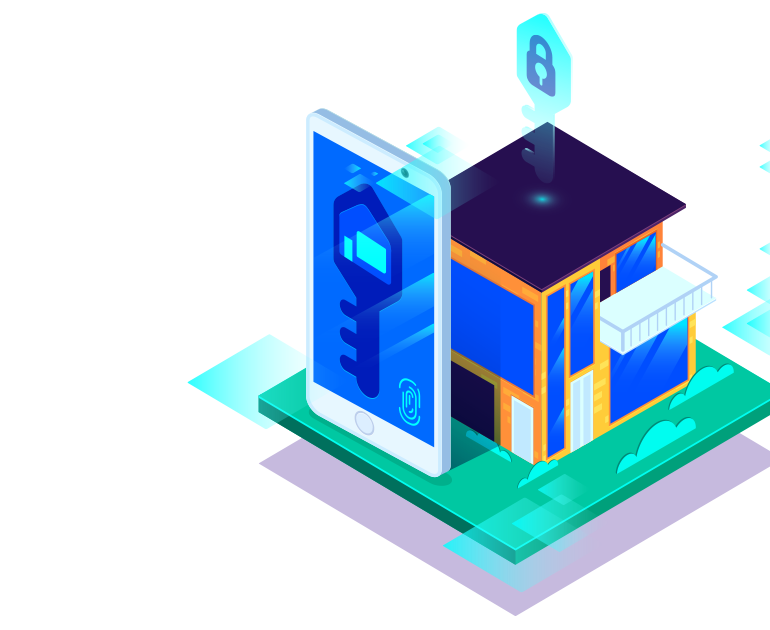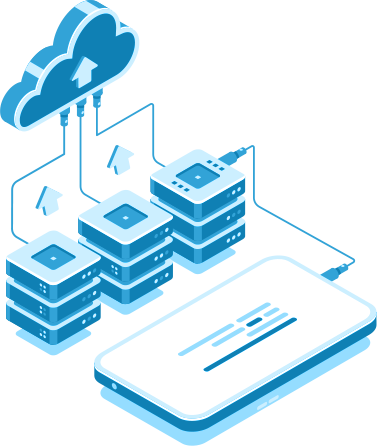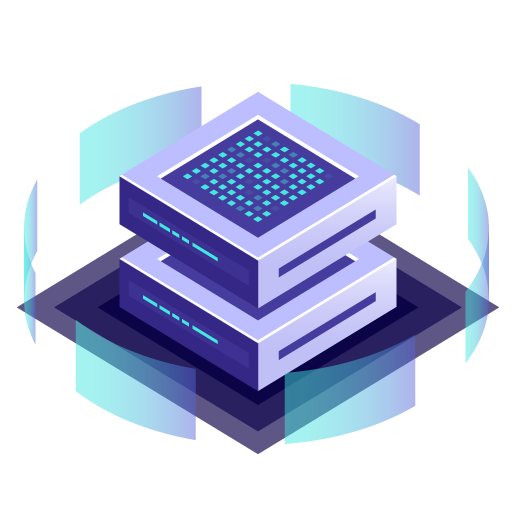Data backup and disaster recovery services
Protect your company data from any possible disaster.

Why do i need data backups and disaster recovery for my company?
When your company works with all kinds of data, especially the one that is crucial for business continuity, it’s important to backup all the data so it can be restored quickly and easily when disaster strikes (disaster recovery).
The benefits include: Low downtime means virtually constant uptime for customers, to build trust, improve company reputation and minimize the financial losses. Furthermore, companies are often required to keep accounting and financial data for compliance with national or international laws.
As an entrepreneur, it’s important to lower many risks by installing a sophisticated system to back up your company data that enables smooth recovery whenever necessary.
The benefits include: Low downtime means virtually constant uptime for customers, to build trust, improve company reputation and minimize the financial losses. Furthermore, companies are often required to keep accounting and financial data for compliance with national or international laws.
As an entrepreneur, it’s important to lower many risks by installing a sophisticated system to back up your company data that enables smooth recovery whenever necessary.
Disaster recovery strategies ensure business continuity
Business continuity management describes all measures to ensure that extreme or emergency situations (e.g. power failures, pandemics, natural disasters) affect a company’s operations as little as possible, and the operations are able to be restored rapidly. Therefore, disaster recovery strategies refer to the rapid restoration of IT systems and the stored data.
However, disaster recovery can only be successful if you prepare a plan for your data backup to ensure it can be restored as smoothly as possible later on.
However, disaster recovery can only be successful if you prepare a plan for your data backup to ensure it can be restored as smoothly as possible later on.
The storage location for the data backups (external hard drive, network drive or the cloud etc.) and the frequency of storage is different from company to company. However, cloud data backup can be considered the most flexible and convenient option, as the cloud provider is responsible to handle and provide the latest hardware and software with relevant standards.

How much data can I afford to lose? (Recovery point objective, RPO)
Your data needs to be backed up constantly if you don’t want to lose any data at all. You can extend the backup intervals a little if losing a few hours of data is acceptable.
How much system downtime can you accept before things get business-critical? (Recovery time objective, RTO)
For most international shops, few hours of complete failure of the IT systems can lead to significant revenue loss. Websites with relatively low traffic might be less affected by an outage lasting several hours or days.

Types of backup and the best way of using them
Full backups
This backup method includes your entire catalogue of data. It requires the most storage space so the individual backup intervals will be longer.
Differential backups Only backup the data that has changed or been added since the last full backup. It requires only considerably less storage space compared to full backup. Shorter backup intervals are possible and individual restore points can be deleted without affecting others.
Incremental backups This method copies the data that has changed or been added since the last incremental or full backup. All incremental backups and a full backup can be used to restore systems and data. Very short backup intervals are possible as the backup does not require much storage space.
Differential backups Only backup the data that has changed or been added since the last full backup. It requires only considerably less storage space compared to full backup. Shorter backup intervals are possible and individual restore points can be deleted without affecting others.
Incremental backups This method copies the data that has changed or been added since the last incremental or full backup. All incremental backups and a full backup can be used to restore systems and data. Very short backup intervals are possible as the backup does not require much storage space.
Backup media: Offline, online and hybrid backups
Offline backups – for instance on hard drives or internal network drives – have the advantage that they remain on-premises and are therefore less vulnerable to external attacks. The disadvantage: accidents like a fire at the headquarters might destroy the stored media.
Online backup media like cloud backup and others are theoretically more vulnerable to an outside attack, but most cloud computing providers have developed methods to keep your data safe, such as multi-level data center security concepts and geo-redundancy.
Hybrid solution use both backup methods: You will be well-prepared for every emergency situation if you keep the your dataset with off-premises (e.g. a hard drive in a bank deposit box) and an online copy in the cloud.
Online backup media like cloud backup and others are theoretically more vulnerable to an outside attack, but most cloud computing providers have developed methods to keep your data safe, such as multi-level data center security concepts and geo-redundancy.
Hybrid solution use both backup methods: You will be well-prepared for every emergency situation if you keep the your dataset with off-premises (e.g. a hard drive in a bank deposit box) and an online copy in the cloud.


Data backups with Acronis Cloud Backup
Our Compute Engine provides many particular strengths include the graphic user interface of the Data Center (DC) Designer and the state-of-the art CLOUD APIs. DC Designer not only let you build entire IT systems to suit your requirements, but also let you decide how each part of the system should be backed up.
You can easily find the button to access the Acronis Backup Console on the DC Designer interface. In there, you can define which backup methods should be used for the individual servers or VMs. Migration of your hardware system to cloud couldn’t be more easier.
You can easily find the button to access the Acronis Backup Console on the DC Designer interface. In there, you can define which backup methods should be used for the individual servers or VMs. Migration of your hardware system to cloud couldn’t be more easier.
Acronis will perform a full backup first and then switches to the incremental method to save any changes. You can easily restore the backup with one simple button if disaster strikes in anytime.
Summary:
Avoid any serious incidents effectively with data backup and disaster recovery strategies
Being well prepared is crucial to lower the economic or even existential risk. A disaster recovery plan determines which method you choose to back up your company’s data in order to restore it as smoothly as possible to ensure your image and business continuity.
Acronis Cloud Backup provides you with a set of powerful tool to back up each component in your IT system as best suits your needs: No matter which operating system, and where the individual elements of your IT system are physically located.
Acronis Cloud Backup provides you with a set of powerful tool to back up each component in your IT system as best suits your needs: No matter which operating system, and where the individual elements of your IT system are physically located.
Tip:
Grab your disaster recovery plan now!
Detailed documentation in disaster recovery plan describes the best way to proceed in emergency situations. Aspects such as the general organization of your infrastructure need to be documented precisely. When errors occur, a step-by-step guide to restore services and all necessary configurations (e.g. IP addresses, DNS configurations, firewalls and routing) makes things easier and less stressful for your employees. You should also determine the sequence in which systems should be put back into operation to restart the operations as smoothly as possible.
